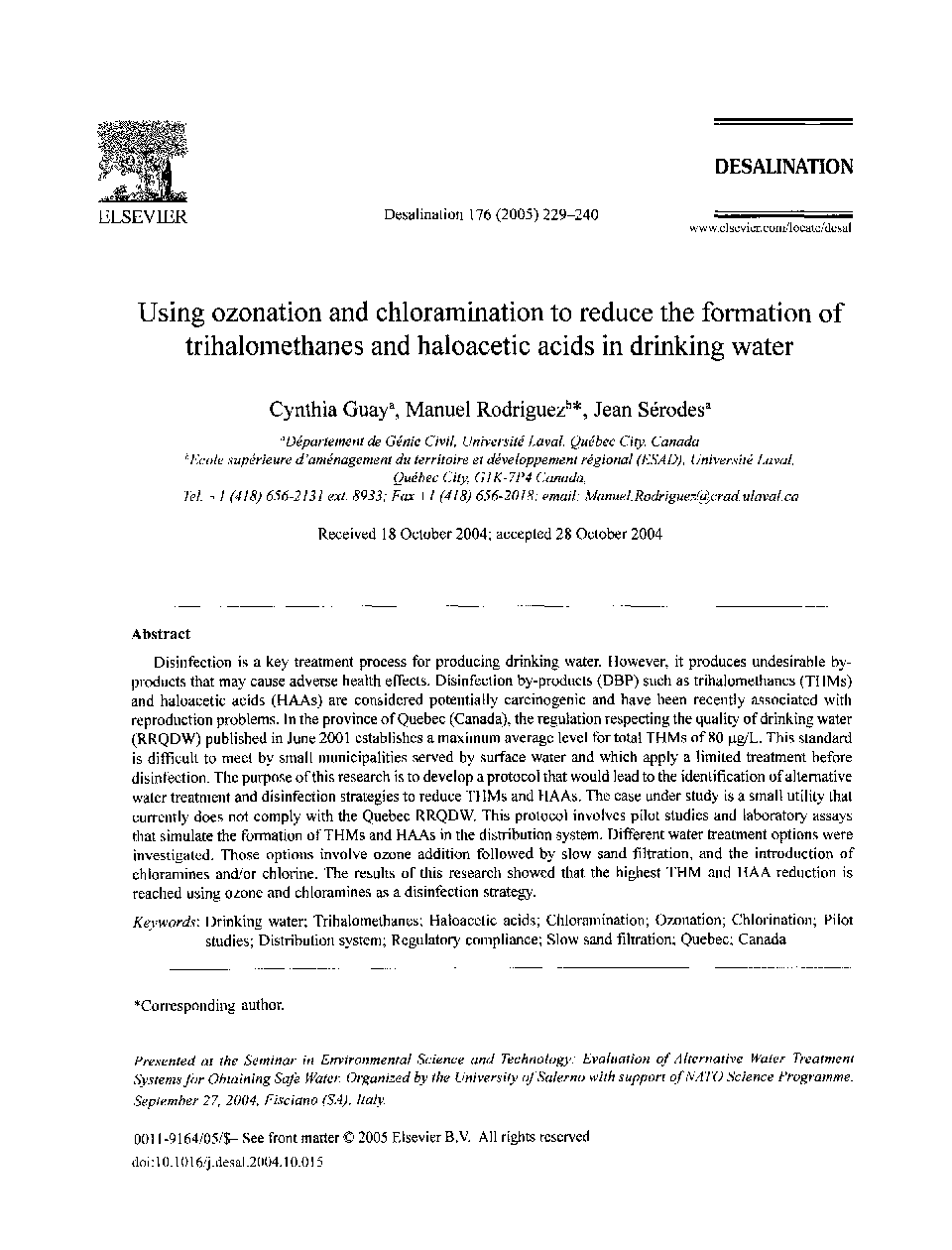| Article ID | Journal | Published Year | Pages | File Type |
|---|---|---|---|---|
| 9681218 | Desalination | 2005 | 12 Pages |
Abstract
Disinfection is a key treatment process for producing drinking water. However, it produces undesirable byproducts that may cause adverse health effects. Disinfection by-products (DBP) such as trihalomethanes (THMs) and haloacetic acids (HAAs) are considered potentially carcinogenic and have been recently associated with reproduction problems. In the province of Quebec (Canada), the regulation respecting the quality of drinking water (RRQDW) published in June 2001 establishes a maximum average level for total THMs of 80 g/L. This standard is difficult to meet by small municipalities served by surface water and which apply a limited treatment before disinfection. The purpose of this research is to develop a protocol that would lead to the identification of alternative water treatment and disinfection strategies to reduce THMs and HAAs. The case under study is a small utility that currently does not comply with the Quebec RRQDW. This protocol involves pilot studies and laboratory assays that simulate the formation of THMs and HAAs in the distribution system. Different water treatment options were investigated. Those options involve ozone addition followed by slow sand filtration, and the introduction of chloramines and/or chlorine. The results of this research showed that the highest THM and HAA reduction is reached using ozone and chloramines as a disinfection strategy.
Keywords
Related Topics
Physical Sciences and Engineering
Chemical Engineering
Filtration and Separation
Authors
Cynthia Guay, Manuel Rodriguez, Jean Sérodes,
